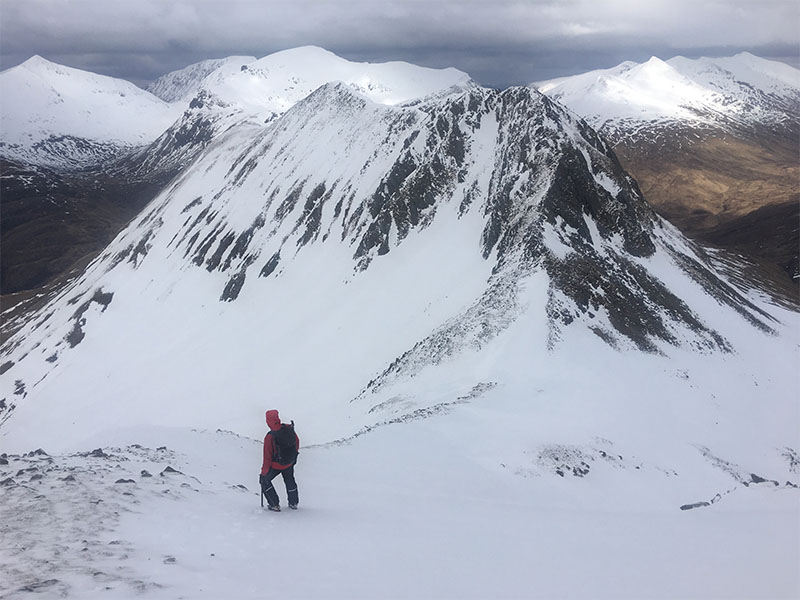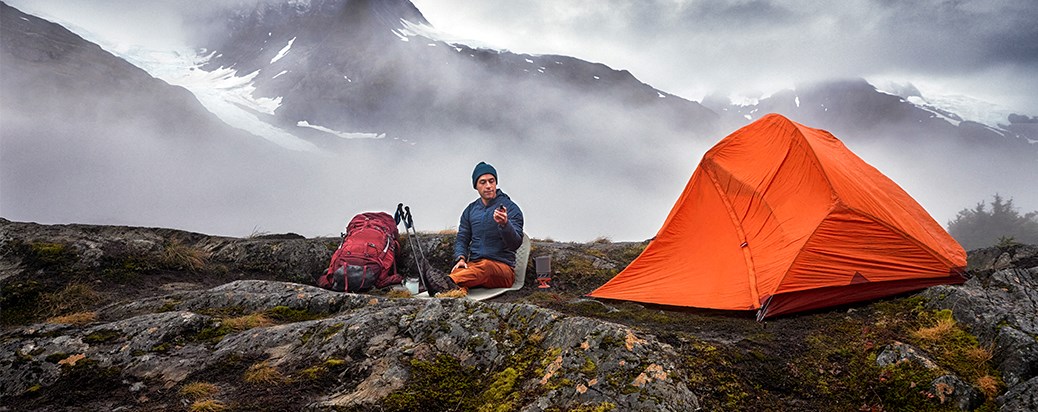You might be able to rely on basic navigation skills and gadgets in summer but now winter is in full swing you need to ensure that you have the skills to still have a great day whatever the conditions.
Navigating in winter is definitely harder! Paths and features such as walls and rivers are buried under snow, there are fewer hours of daylight and a typically poor (or even zero) visibility. So, here’s my top tips to manage navigation in winter.
1. Have the gear and have an idea!
Map and compass are essential kit in winter, but make sure you know how to use them. GPS devices can be useful for quick relocation but in cold temperatures they can be unreliable and can fail so always ensure you can use a map and compass for navigating. Here’s some resources to get you started.
In the mountains in winter, features such as fences, walls, rivers and cairns can disappear under snow so if you’re going to head up high, ensure you are confident navigating with contours.
Do you know how to do a back bearing, aim off, walk on a bearing and relocate using aspects of slope? These are all complex navigation skills but essential if you’re going to prevent getting lost in poor visibility and poor weather.

2. Proper planning prevents poor performance!
Route choice and planning is always important but consider in winter that the days are shorter, you’ll have a heavier pack due to more food and clothing along with crampons and an axe, so you’ll be walking much slower. When you plan a route consider the distance you intend to travel and the quality of the terrain and ensure you’re not setting yourself an unreasonable challenge.
Be aware of the weather forecast when you head out. Mountain Weather Information Service provides a detailed forecast of all mountain regions in the UK.
3. Know where you are at all times

Poor weather can be mentally draining as you can focus on keeping warm and distracted from navigating.
When you look at the map and consider your route, create a list of features to ‘tick off’ so that as you pass them you have a constant awareness of where you are on your route.
This will help should the fog roll in or a white out descend.
4. Trust your compass
In poor visibility, it’s easy to feel disorientated. Take a bearing and double check it. Unless you’ve made the mistake of having it near your mobile phone it will be accurate, so trust what it says and stick to it.
5. Know your 100m pace
If you’re going to walk on a bearing you need to know how many paces this is in your own gait. Before you head out figure this out on a flat field and pace out, counting each double step. (Usually between 60 and 75 for most people).
Remember when walking uphill on rocky terrain or deep snow your gait will be shorter so remember to add a percentage to this depending on conditions.
6. Contours are your friend
Being able to use contours to interpret slope aspect can be a lifesaving technique when you find yourself lost in poor visibility.
They can be the hardest to interpret feature on a map and certainly take practice to master, but contours are the one feature in the landscape which will not change in winter.
Down will always be down.
Understand how to interpret the tiniest of contour features, from re-entrants to ridges and spurs, as these can be your friend to identify where you are and the best routes to take.
Check out this beginners guide and video with Steve Backshall.

7. Be aware of potential hazards
Winter presents new hazards to mountain terrain as snow and ice can make easy routes much more complex. It is essential you know how to read and interpret an avalanche forecast and use it alongside weather reports to understand how conditions will be changed and where the hazards are likely to be.
Always remember ‘Ridges are bridges’ and providing they aren’t rocky aretes they provide the safest way to descend the mountain should you come across unstable windslab as they tend not to hold the snow as much as corries.
8. Be flexible
Be Avalanche Aware at all times. This means that while you might have set out to do a route you deemed safe from the warmth of your house, conditions might be different, or you deem to be unsafe for you when you get there. This means you need to be more flexible in winter to change plans.
If you don’t know how to read an avalanche forecast go to the Avalanche Information Service website for tutorials or attend an avalanche awareness course at one of the national mountain centres. Understanding snow conditions is an essential winter skill.
9. Gadgets are useful
There’s nothing wrong with having a gadget with you. A GPS device, watch or phone can also be a lifesaving tool to relocate quickly in poor weather conditions.
There’s nothing wrong with using these tools to help you, but don’t rely on them or you’ll be stuck if the batteries fail in the cold.
Check out this advice from the team at Mountain Rescue. OS Shop safety gear can be found here and OS Maps could be a helpful addition to your printed maps.

EXPLORE THE
OS Shop
We are with you every step of the way. Shop our trusted walking and hiking maps and guidebooks so you can explore the outdoors with confidence.
Go to the shop




